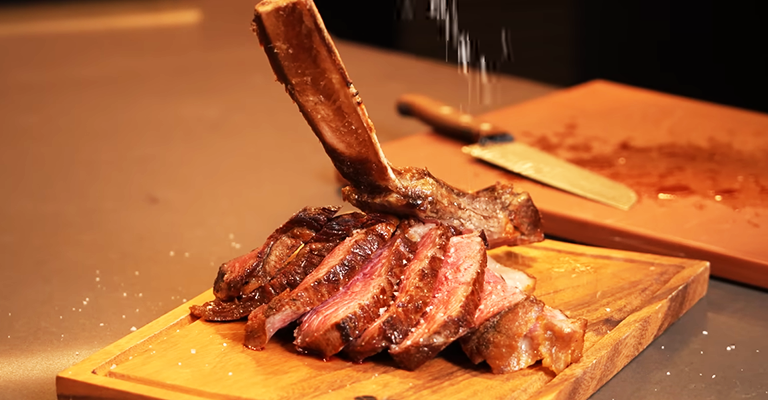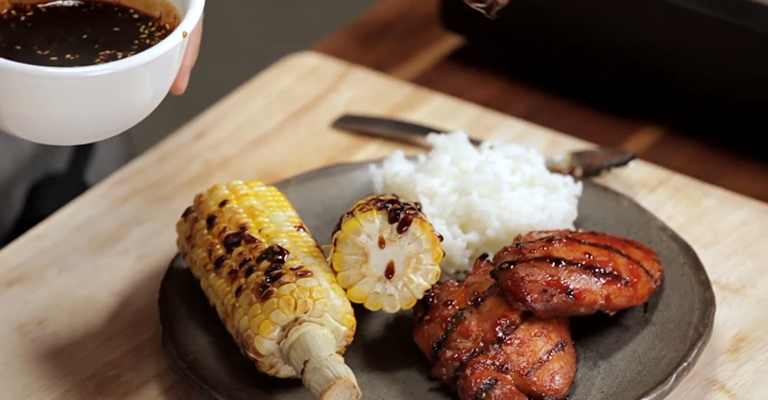Why Do Avocados Get Stringy?-Unraveling the Mystery
Avocados, celebrated for their creamy texture and rich flavor, occasionally present an unexpected challenge: stringiness. Understanding the factors behind this phenomenon is key to maximizing the enjoyment of this popular fruit.
From overripeness to varietal characteristics, a variety of elements contribute to avocados developing a fibrous texture.
The intricacies of growing conditions, post-harvest handling, and even the age of the tree all play pivotal roles. Unraveling the mystery of why avocados get stringy empowers consumers to make informed choices, ensuring they savor the fruit at its best.
Delving into these factors offers insights into how to preserve the cherished creamy consistency that avocados are prized for.
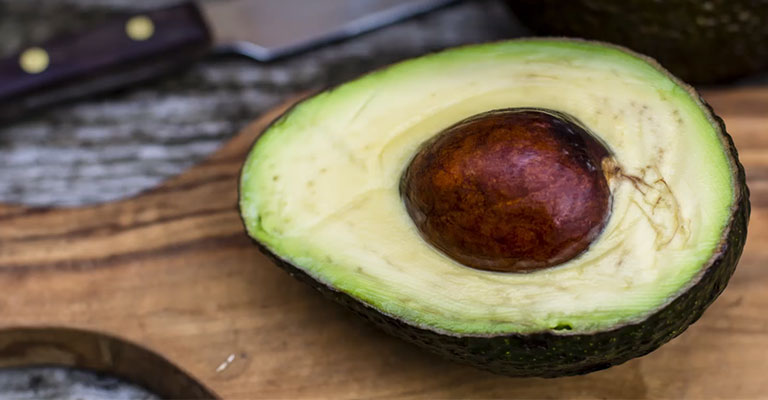
What Is Stringiness?
Stringiness in avocados is a texture issue that can make the fruit less enjoyable to eat. It occurs when the flesh of the avocado develops fibrous or stringy structures, which can be similar to the texture of unripe or overripe avocados.
Stringiness can result from various factors, including:
- Ripeness: Avocados that are overripe can become stringy as the cell walls break down and the flesh loses its smooth, creamy texture.
- Varietal Characteristics: Certain avocado varieties are naturally more prone to stringiness, regardless of their ripeness. This is part of the inherent genetic makeup of the fruit.
- Handling and Transportation: Rough handling during harvesting, storage, or transportation can lead to damage and bruising in the fruit. This damage can cause the development of stringy areas within the avocado.
- Age of the Tree: Avocado trees may produce fruit with varying textures based on their maturity. Young trees may yield avocados with a different texture than those from more mature trees.
Why Do Avocados Get Stringy?
Avocados can sometimes develop stringy or fibrous textures, which can be off-putting to consumers.
There are several reasons behind this phenomenon:
Overripeness
Avocados are best enjoyed when they are perfectly ripe, but if left too long, they can become overripe.
As the fruit continues to ripen, enzymes in the flesh break down cell walls, leading to a softer, sometimes stringy texture. This is often accompanied by a darkening of the flesh and a distinct change in flavor.
Varietal Differences
Avocado varieties exhibit unique characteristics. For instance, while the Hass avocado is known for its creamy texture, other varieties like Fuerte tend to be less smooth and can develop a fibrous consistency as they ripen.
Recognizing these varietal traits can help consumers choose avocados that align with their preferred texture.
Growing Conditions
The environment in which avocados grow plays a pivotal role in their texture. Soil quality, temperature fluctuations, and water availability directly impact the fruit’s development.
For example, avocados grown in nutrient-rich, well-drained soils are more likely to yield creamier, less fibrous fruit.
Storage
Avocados are sensitive to temperature and humidity. Storing them in conditions that are too cold, too warm, or excessively humid can lead to textural issues.
Cold storage inhibits the ripening process, potentially resulting in a mealy or stringy texture when the fruit is finally brought to room temperature.
Handling and Transportation
Avocado flesh can be delicate, and rough handling during harvesting and transportation can lead to internal bruising and damage.
These injuries accelerate the breakdown of the flesh, often resulting in stringiness in affected areas.
Prolonged Exposure to Air
Avocado flesh contains enzymes that react with oxygen, leading to browning and changes in texture.
Slicing or mashing the fruit exposes more surface area to air, which can accelerate the development of stringiness. This is why it’s advisable to use lemon juice or other acidic agents to slow down this process.
Inconsistent Ripening
Avocado ripening can be uneven. Some parts of the fruit may become soft and creamy, while others remain firmer and even stringy.
This inconsistency is often attributed to variations in temperature, humidity, or damage during growth.
Genetic Factors
The texture of an avocado’s flesh can be influenced by its genetic makeup. Some varieties, regardless of ripeness, inherently exhibit a more fibrous or grainy consistency.
This characteristic is determined by the specific combination of genes in each avocado variety.
Post-Harvest Treatments
Ethylene gas is commonly used in the industry to accelerate the ripening of avocados after harvest.
While this can be effective in ensuring that avocados are ready for consumption, it can sometimes lead to variations in texture, potentially resulting in stringiness in some cases.
Age of the Tree
Young avocado trees may produce fruit with a different texture than older, more established trees.
As the tree matures, it undergoes changes in nutrient uptake and overall physiology, which can influence the composition and texture of the fruit it produces.
The Anatomy of an Avocado
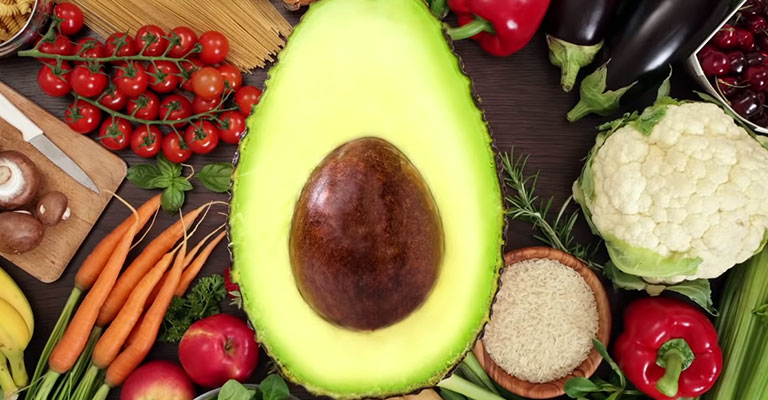
The avocado, scientifically known as Persea americana, is a unique fruit with a distinctive anatomy. It is native to south-central Mexico but is now cultivated in many parts of the world.
Here’s a breakdown of the anatomy of an avocado:
Outer Skin (Pericarp)
The avocado has a tough, outer skin that protects the fruit. It varies in color depending on the variety and ripeness, ranging from dark green to almost black when ripe. This skin is inedible.
Flesh (Mesocarp)
Beneath the skin lies the creamy, edible part of the avocado known as the flesh. It’s rich in healthy fats, fiber, and a variety of essential nutrients.
The color can range from pale yellow-green to vibrant green, again depending on the variety and ripeness.
Central Pit (Seed or Stone)
The large, hard pit or seed is located at the center of the fruit. It accounts for about 15-25% of the avocado’s total weight. It’s inedible and must be removed to access the flesh.
Fiber Bundles
These are stringy structures that radiate out from the central pit into the flesh. In some cases, particularly in overripe avocados, these fiber bundles can become more pronounced, leading to a stringy texture.
Oil Cells
Scattered throughout the flesh are small oil cells that store the healthy monounsaturated fats that avocados are renowned for. These oils contribute to the creamy texture and nutty flavor of the fruit.
Nutrient-Rich Tissues
Apart from healthy fats, avocados contain a wealth of essential nutrients including vitamins (such as B vitamins, vitamin K, and vitamin E), minerals (such as potassium and magnesium), and antioxidants.
Vascular Tissues
These are responsible for the transport of water and nutrients within the fruit. They ensure that the avocado receives the necessary resources for growth and development.
Skin Adhering to Flesh
A thin layer of green tissue often adheres to the inner surface of the skin. It’s best to scrape this layer with a spoon to maximize the amount of edible flesh.
Embryo
Within the seed is the embryo, which has the potential to develop into a new avocado plant given the right conditions. This is why some people choose to grow avocado plants from seeds.
Blossom End
This is the end of the fruit that was once attached to the stem of the avocado tree. It’s generally slightly narrower and more pointed than the opposite end.
Culinary Techniques and Stringiness?

Stringiness in avocados can be a texture issue that affects their culinary appeal. However, there are several culinary techniques and practices that can help mitigate or minimize the impact of stringiness.
Here are some tips:
Choose Ripe Avocados
Selecting avocados at the right stage of ripeness is essential. Overripe avocados are more likely to develop a stringy texture.
Look for avocados that yield slightly to gentle pressure but are not mushy. The skin should also be a uniform color (varies by variety) and free from large blemishes.
Proper Storage
Store avocados at room temperature until they reach your desired level of ripeness.
Once they’re ripe, you can slow down further ripening by refrigerating them. This can help maintain their texture and prevent overripening.
Use an Acidic Agent
Adding lemon juice, lime juice, or vinegar to avocados can help prevent enzymatic browning and also slow down the breakdown of the flesh. These acidic agents can contribute to preserving a smoother, creamier texture.
Mashing or Blending
When preparing guacamole or other avocado-based dips, use a fork or a blender to mash the avocado until it reaches your desired consistency.
This can help break down any potential stringy fibers and create a smoother texture.
Strain or Sieve
When you encounter an avocado with noticeable stringiness, you can strain the mashed avocado through a fine-mesh sieve. This will help remove any fibrous strands, leaving behind a smoother mixture.
Add Creamy Ingredients
Incorporating creamy ingredients like Greek yogurt, sour cream, or mayonnaise into recipes can help mask or complement any stringiness. These ingredients can contribute to a smoother overall texture.
Blend with Other Ingredients
When making smoothies or sauces, blend avocados with other ingredients like yogurt, fruits, or vegetables. This can help integrate any stringy fibers and create a more homogeneous texture.
Select Varieties Carefully
Some avocado varieties are naturally creamier and less likely to develop stringiness. Varieties like Hass are known for their smooth, buttery texture.
Avoid Overmixing
When incorporating avocados into recipes, avoid overmixing or overprocessing. Excessive blending or stirring can potentially exacerbate stringiness.
Taste and Adjust
Taste the dish as you go along and adjust seasonings and ingredients as needed. This way, you can balance out any textural issues with flavors and complementary ingredients.
How Storage Conditions Affect Texture?
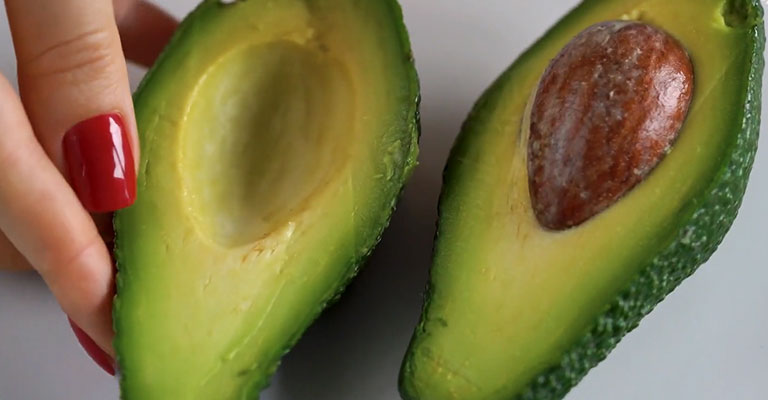
Storage conditions play a crucial role in maintaining the texture and quality of avocados.
Here’s how different storage conditions can affect the texture of avocados:
Temperature
- Refrigeration: Storing avocados in the refrigerator slows down the ripening process. This can be beneficial if you want to extend the shelf life of unripe avocados.
- Room Temperature: Avocados ripen best at room temperature (around 68-72°F or 20-22°C). At this range, the fruit undergoes a controlled and gradual ripening process, resulting in a creamy and desirable texture.
Humidity
- Low Humidity: Dry conditions can lead to moisture loss from the fruit, causing it to become shriveled and potentially stringy or rubbery.
- High Humidity: Excessive humidity can promote mold growth and accelerate spoilage. It’s important to strike a balance to maintain optimal texture.
Isolation
- Isolation from Ethylene-Producing Fruits: Ethylene is a natural plant hormone that promotes ripening. Storing avocados away from ethylene-producing fruits like bananas, apples, and tomatoes can help control the ripening process and preserve texture.
Airflow
- Proper Ventilation: Avocados benefit from adequate airflow, which helps regulate temperature and humidity. However, excessive air circulation can lead to moisture loss, so it’s essential to strike a balance.
Handling
- Gentle Handling: Rough handling can lead to bruising and damage, which can accelerate the breakdown of the fruit’s flesh. This can result in a stringy or fibrous texture.
Packaging
- Paper Bag Method: Placing unripe avocados in a paper bag with a banana or apple can help speed up the ripening process due to the ethylene gas emitted by these fruits.
- Plastic Bags: While they can trap ethylene and help ripen avocados, plastic bags can also trap moisture, potentially leading to spoilage or undesirable texture.
Duration of storage
- Length of Storage: The longer avocados are stored, the greater the likelihood of textural changes. Over time, even properly stored avocados can become overripe and develop a softer, potentially stringy texture.
Tips for Avoiding Stringy Avocados at the Store
When shopping for avocados at the store, you can employ several tips to increase your chances of selecting avocados that are less likely to be stringy and have the desired creamy texture:
Check for Ripe Avocados
Choose avocados that are at the appropriate stage of ripeness. Look for avocados that yield slightly to gentle pressure when you squeeze them.
However, avoid avocados that are overly soft, as they may be overripe and more prone to stringiness.
Examine the Skin Color
The skin color of avocados varies by variety, but it should be consistent and even for the specific type.
For example, Hass avocados should have dark, purplish-black skin when ripe. Irregularities or uneven coloring can be a sign of texture issues.
Avoid Avocados with Visible Damage
Check for any signs of bruising, cuts, or blemishes on the skin. These can be indicative of internal damage and may contribute to stringiness.
Inspect the Stem Area
Gently remove the small stem or cap at the top of the avocado. If it comes away easily and reveals green flesh underneath, the avocado is likely ripe and in good condition. If it’s brown or moldy, the avocado may be overripe or damaged.
Size Matters
Smaller avocados often have a smoother texture than larger ones. Consider choosing avocados that are smaller if you want to reduce the risk of stringiness.
Feel for Uniform Firmness
Run your fingers over the surface of the avocado. It should feel uniformly firm, with no soft spots or indentations. Irregularities in firmness can indicate texture issues.
Smell the Avocado
Ripe avocados emit a subtle, earthy aroma. If an avocado has no scent at all, it may not be ripe. If it has an off-putting or fermented smell, it may be overripe.
Ask Store Staff for Guidance
When you’re uncertain about how to pick the best avocados or if you have specific preferences, don’t hesitate to ask store employees for assistance. They can provide advice or even help you select ripe avocados.
Buy Multiple Avocados
To hedge your bets, buy multiple avocados at different stages of ripeness. This way, you can use the ripest ones immediately and let the others continue to ripen at home.
Be Patient
When you can’t find the perfect avocado at the store, don’t rush your purchase. Allow avocados at home to ripen on the counter before using them for the best texture.
FAQs
Why do avocados sometimes become stringy?
Avocados can become stringy due to factors like overripeness, varietal characteristics, and damage during handling or transportation.
Is it safe to eat stringy avocados?
Yes, stringy avocados are safe to eat, but they may have an undesirable texture. You can still use them in recipes like guacamole, but some people find the texture less appealing.
Can improper storage lead to stringy avocados?
Yes, improper storage conditions, such as being kept in environments that are too cold or too humid, can lead to avocados developing a stringy texture.
Can avocados become stringy if they’re not ripe enough?
Yes, unripe avocados can be somewhat fibrous. However, this is different from the stringiness that occurs in overripe avocados.
Are all avocado varieties prone to stringiness?
No, not all avocado varieties are equally prone to stringiness. Some varieties are naturally creamier, while others are more likely to develop a fibrous texture as they ripen.
To Recap
The stringiness of avocados is a multifaceted issue stemming from factors such as ripeness, varietal differences, growing conditions, and post-harvest handling.
Avocados transition from a creamy, desirable texture to a stringy one primarily due to overripeness, during which cell walls break down, and fiber structures become more pronounced.
Varietal characteristics can also play a role, with some avocado varieties naturally prone to stringiness. Proper storage and handling practices are crucial to maintaining the creamy texture of avocados.
Recognizing the critical role of these factors enables consumers to enjoy this beloved fruit at its best, making informed choices to minimize stringiness and enhance their culinary experience.
